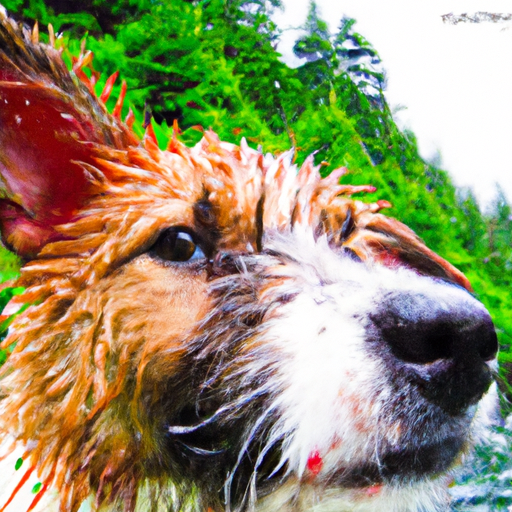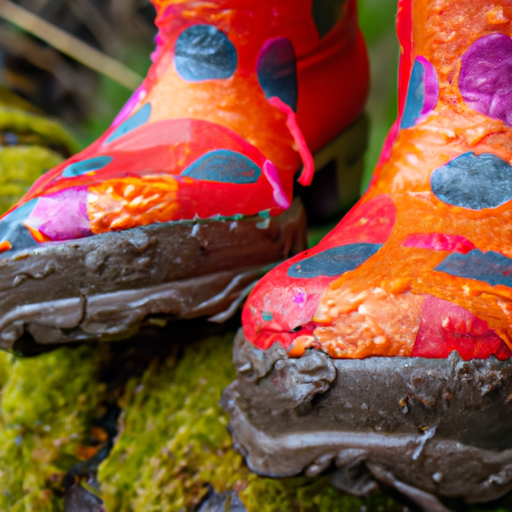When it comes to ensuring the happiness and well-being of your furry friend, the importance of creating a comfortable living space cannot be overstated. As your dog enters adulthood, their needs evolve, and it becomes crucial to provide them with an environment that meets their changing requirements. From cozy beds and designated play areas to enriching toys and soothing background sounds, giving your adult dog a space of their own not only enhances their overall comfort but also strengthens the bond between you and your loyal companion. In this article, we will explore some simple yet effective ways to create a comfortable living space that your adult dog will absolutely adore.
1. Choosing the Right Bed
When it comes to choosing the right bed for your adult dog, there are a few factors to consider. The size and shape of the bed should be appropriate for your dog's size and sleeping habits. Some dogs prefer to curl up in a tight ball while others stretch out fully. Therefore, it's important to select a bed that allows your dog to sleep in their preferred position comfortably.
In terms of material and padding, there are various options available. Memory foam beds are a popular choice for dogs with joint and muscle pain as they provide excellent support. Alternatively, orthopedic beds are designed specifically to relieve pressure points and promote better posture. It's essential to choose a bed with high-quality padding to ensure your dog's comfort and prevent issues like pressure sores or muscle stiffness.
1.1 Size and Shape
To determine the appropriate size and shape of the bed for your dog, measure their length from nose to tail and their shoulder height. Take note of any specific sleeping habits your dog has, such as whether they like to stretch out or curl up. This will help you choose a bed that accommodates your dog's size and preferred sleeping style.
1.2 Material and Padding
Consider the materials used in the bed and the type of padding offered. Memory foam beds are a great choice for dogs with joint and muscle pain, while orthopedic beds provide excellent support and relieve pressure points. Look for beds with high-quality padding to ensure your dog's comfort and overall well-being.
1.3 Orthopedic Options
If your dog has specific orthopedic needs, such as arthritis or joint issues, consider investing in an orthopedic bed. These beds are specifically designed to provide extra support and relieve pressure on sensitive joints. Orthopedic beds can make a significant difference in your dog's comfort, especially as they age.
2. Providing Adequate Exercise
Just like humans, dogs need regular exercise to maintain a healthy lifestyle. Adequate exercise not only keeps your dog physically fit but also helps to prevent behavioral issues caused by pent-up energy. Here are some ways to ensure your dog gets the exercise they need.
2.1 Daily Walks
One of the simplest and most effective ways to provide exercise for your adult dog is by taking them on daily walks. These walks not only provide physical exercise but also mental stimulation as your dog interacts with the outside world. Aim for at least 30 minutes to an hour of brisk walking each day, depending on your dog's size and energy levels.
2.2 Interactive Toys
In addition to walks, interactive toys can be a great way to engage your dog's mind and provide physical activity. Toys that dispense treats or require problem-solving can keep your dog entertained and mentally stimulated. Look for puzzle toys and treat-dispensing toys that require your dog to work for their reward.
2.3 Mental Stimulation
Exercise isn't just limited to physical activity. Mental stimulation is equally important for your dog's well-being. Engage your dog's brain by incorporating games and training sessions into their daily routine. Activities such as obedience training, scent work, and agility training can provide mental and physical exercise while strengthening the bond between you and your dog.
3. Ensuring Proper Hydration and Nutrition
Proper hydration and nutrition are essential for maintaining your dog's overall health and well-being. Here are some ways to ensure your dog gets the hydration and nutrition they need.
3.1 Access to Fresh Water
Make sure your dog has access to fresh, clean water at all times. Provide a water bowl in a convenient location in your dog's living area and ensure it is refilled regularly. It's important to monitor your dog's water intake, especially during warmer months or if they engage in strenuous physical activities.
3.2 Balanced and Nutritious Diet
Feed your dog a balanced and nutritious diet that meets their specific dietary needs. Consult with your veterinarian to determine the appropriate type and amount of food for your dog based on factors such as age, weight, and any underlying health conditions. Choose high-quality commercial dog food or consider a homemade diet under the guidance of a veterinary nutritionist.
3.3 Mealtime Routine
Establishing a regular mealtime routine can help your dog develop good eating habits. Feed your dog at the same times each day and ensure they have a quiet and calm space to eat without distractions. Avoid feeding your dog table scraps or excessive treats, as this can lead to weight gain and nutritional imbalances.
4. Creating a Safe and Secure Environment
Creating a safe and secure environment is crucial to your dog's well-being. By dog-proofing the space, providing escape-proof enclosures, and maintaining optimal temperature and climate control, you can ensure a safe living environment for your furry friend.
4.1 Dog-Proofing the Space
Take precautions to dog-proof your living space by removing any potential hazards. Keep toxic plants, cleaning supplies, medications, and sharp objects out of your dog's reach. Secure loose cords and wires, and block access to areas or rooms where your dog could get injured or cause damage.
4.2 Escape-Proof Enclosures
Whether you have a backyard or an apartment, it's important to provide a safe and secure enclosure for your dog. Ensure that fences are in good condition and tall enough to prevent escapes. For apartment dwellers, consider using baby gates or playpens to create a secure space for your dog to move around without the risk of getting into trouble.
4.3 Temperature and Climate Control
Maintain a comfortable temperature and climate for your dog. Avoid exposing them to extreme heat or cold, as it can be harmful to their health. Install temperature control systems in your home, provide access to shade in your backyard, or use cooling mats and jackets during hot weather. Likewise, provide warm bedding and shelter during colder seasons.
5. Providing a Quiet and Calm Retreat
Just like humans, dogs also need a quiet and calm space where they can retreat and relax. Here are some strategies to create a peaceful sanctuary for your dog.
5.1 Quiet Area Away from High Traffic
Designate a quiet area in your home where your dog can retreat to when they need some peace and quiet. This area should be away from high-traffic areas to minimize noise and disturbances. Set up a cozy bed or crate, provide soft blankets and toys, and ensure it is a calming space for your dog to relax and unwind.
5.2 Comfortable and Cozy Crate
If your dog is comfortable with crate training, providing a comfortable and cozy crate can be a great way to offer them a comforting retreat. Make sure the crate is the appropriate size, well-ventilated, and contains comfortable bedding. Crate training can also be used for house training or to keep your dog safe when you're not at home.
5.3 Noise Reduction Strategies
If your dog is sensitive to loud noises or lives in a noisy environment, consider using noise reduction strategies. You can use white noise machines, soothing music, or calming pheromone sprays to create a more peaceful atmosphere. Additionally, provide your dog with a quiet space during fireworks, thunderstorms, or other situations where noise levels may increase.
6. Designing a Dog-Friendly Layout
When designing your living space, it's important to consider your dog's needs. Creating a dog-friendly layout involves ensuring clear pathways and floor surfaces, providing accessible furniture and resting areas, and avoiding clutter and hazards.
6.1 Clear Pathways and Floor Surfaces
Ensure that there are clear pathways throughout your home for your dog to move around freely. Remove any obstacles or clutter that could impede their movement or cause accidents. Additionally, choose floor surfaces that are safe and comfortable for your dog, such as non-slip flooring to prevent injuries.
6.2 Accessible Furniture and Resting Areas
Provide your dog with accessible furniture and resting areas throughout your home. This could include dog beds or blankets in various rooms where your dog likes to spend time. Make sure they have a designated spot where they can relax and rest comfortably.
6.3 Avoiding Clutter and Hazards
Keep your living space free from clutter that could pose a risk to your dog's safety. Avoid leaving small objects or items that could be chewed or swallowed within your dog's reach. Secure loose cables or wires, keep cleaning supplies out of reach, and ensure that any hazardous substances are stored safely.
7. Incorporating Comfortable Dog Accessories
In addition to the basics, incorporating comfortable accessories can enhance your dog's living space. Soft blankets and cushions, elevated feeding bowls, and dog-friendly decor can all contribute to your dog's overall comfort and happiness.
7.1 Soft Blankets and Cushions
Provide your dog with cozy and soft blankets or cushions to snuggle up on. This can be especially beneficial for dogs who enjoy nesting behaviors or those who may need extra warmth and comfort. Consider investing in blankets made from natural, breathable materials that are easy to clean.
7.2 Elevated Feeding Bowls
Elevated feeding bowls can be beneficial for dogs with certain health conditions, such as arthritis or neck pain. They help to reduce strain on the neck and promote easier digestion. Ensure that the bowls are at the appropriate height for your dog to comfortably eat without straining their neck or back.
7.3 Dog-Friendly Decor
Incorporate dog-friendly decor into your living space to make it feel more welcoming and comfortable for your dog. This can include things like dog-themed artwork, dog toys displayed in a decorative manner, or even a designated shelf or drawer for all your dog's accessories. By including your dog's presence in the decor, you create an environment that feels inclusive and inviting.
8. Maintaining a Clean and Odor-Free Space
Keeping your dog's living space clean and odor-free is essential for a comfortable and healthy environment. Regular cleaning and vacuuming, using odor control products, and practicing proper grooming and washing techniques can help maintain a fresh and pleasant space.
8.1 Regular Cleaning and Vacuuming
Regularly clean your dog's living space to remove dirt, hair, and any potential allergens. Vacuuming carpets or using a pet-friendly broom can help keep the floors clean. Pay attention to corners and tight spaces where dirt can accumulate. Additionally, wash your dog's bedding regularly to prevent odors and ensure cleanliness.
8.2 Odor Control Products
Use odor control products to keep your dog's living space smelling fresh. There are various options available, such as pet-friendly sprays or diffusers that neutralize odors. Additionally, consider using baking soda on carpets or furniture upholstery to absorb and eliminate any lingering odors.
8.3 Washing and Grooming Your Dog
Regularly washing and grooming your dog can significantly reduce odor and keep them comfortable. Bathing your dog using a mild, dog-specific shampoo can help remove dirt and oils from their coat. Additionally, brush your dog's coat regularly to prevent matting and shedding, which can contribute to odor and cleanliness issues.
9. Providing Socialization and Interaction
Dogs are social animals and thrive on human interaction and companionship. Ensuring regular socialization and interaction is crucial for their mental and emotional well-being. Here are some ways to provide socialization and interaction for your adult dog.
9.1 Regular Human Interaction
Spend quality time with your dog every day, engaging in activities they enjoy. This can include playing fetch, going for walks, cuddling, or simply sitting together. Regular human interaction strengthens the bond between you and your dog and helps prevent feelings of loneliness or boredom.
9.2 Playdates and Doggy Daycare
Arrange playdates with other friendly dogs or consider enrolling your dog in doggy daycare. This provides an opportunity for your dog to interact with other dogs and engage in playtime. Socializing with other dogs can help develop important social and communication skills while providing mental and physical stimulation.
9.3 Training and Enrichment Classes
Enroll your dog in training or enrichment classes to provide mental stimulation while learning new skills. These classes offer opportunities for socialization with other dogs as well as instruction from professional trainers. Training classes can help reinforce positive behavior and address any behavioral issues your dog may have.
10. Monitoring Your Dog's Health and Comfort
Lastly, it's important to regularly monitor your dog's health and comfort to ensure they are living their best life. Regular veterinary check-ups, observing signs of discomfort, and adjusting the living space as needed are key factors in keeping your dog happy and healthy.
10.1 Regular Veterinary Check-Ups
Schedule regular check-ups with your veterinarian to ensure your dog's overall health and well-being. Regular veterinary visits allow for preventive care, early detection of any potential health issues, and appropriate vaccinations. Your veterinarian can also provide guidance on any specific health concerns or changes you may notice in your dog.
10.2 Observing Signs of Discomfort
Be attentive to signs of discomfort or distress in your dog. Dogs may exhibit signs of pain, illness, or discomfort, such as changes in appetite, behavior, or mobility. If you notice any unusual symptoms or behaviors, consult with your veterinarian promptly. Being proactive about your dog's health can prevent potential complications and ensure their comfort.
10.3 Adjusting the Living Space as Needed
As your dog ages or if they develop specific health conditions, it may be necessary to make adjustments to their living space. This could include providing additional support, such as ramps or stairs for easier access, utilizing heating or cooling devices for comfort, or modifying furniture or bedding to accommodate specific needs. Assess your dog's changing needs regularly and make necessary modifications to ensure their comfort and well-being.
Creating a comfortable living space for your adult dog involves considering their specific needs, preferences, and overall well-being. By providing the right bed, adequate exercise, proper hydration and nutrition, a safe environment, a calm retreat, a dog-friendly layout, comfortable accessories, cleanliness, socialization and interaction, and monitoring their health and comfort, you can ensure that your furry companion has a happy and comfortable home. Remember, a comfortable living space contributes greatly to your dog's overall happiness and quality of life.






